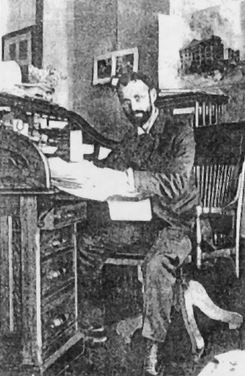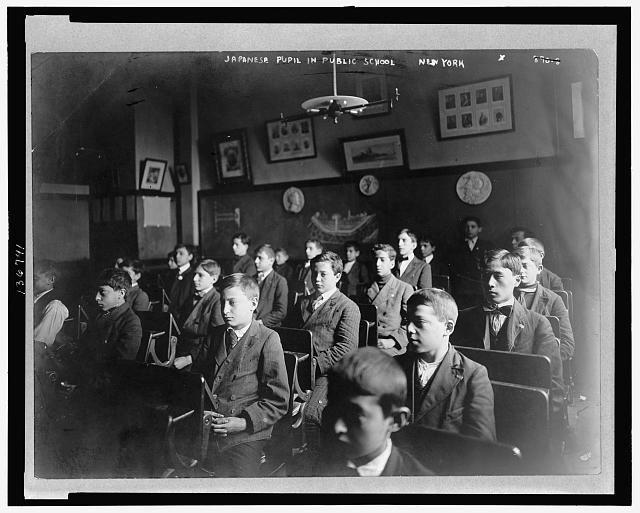Blog Archive
Reading, Writing, Architecture
What does a school look like? If you envision a big building with big windows and tall ceilings, a building whose classrooms are bathed in light and fresh air, then you have C.B.J. Snyder to thank.
Before Snyder became chief architect of the New York public schools in 1891, school buildings – especially in immigrant neighborhoods like the Lower East Side – were infamous for their poor ventilation and cramped quarters. Snyder wanted to fix that. His schools would be massive, with the biggest windows and highest ceilings he could get away with. Although his schools often covered most of a city block, they were full of airshafts and indentations, ensuring lots of air and light for every child in every classroom.
Snyder had a thing for air and light.
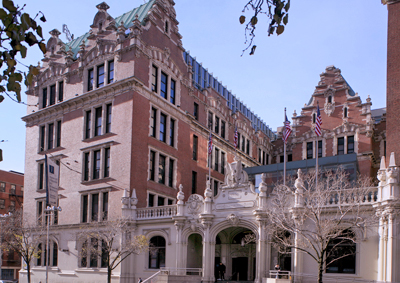
DeWitt Clinton High School in the West Bronx, designed by Snyder. Photo courtesy NYC Department of Education.
But then, so did most reformers back then. Tenements were dark and fetid, and middle-class reformers feared that these grotesque living conditions would stunt the physical, mental, and moral development of young immigrant children. For Snyder, schools were not just for learning. They were also a cure for the evils of tenement living. The more time a student spent in these new school buildings, the better his or her health would be – and the better an adult he or she would become.
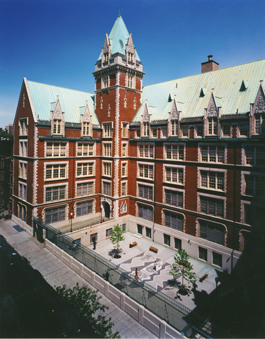
Wadleigh Secondary School for the Performing & Visual Arts on West 114th Street, Manhattan, designed by Snyder. Image courtesy the NYC Department of Education.
Today, Snyder’s schools look elegant and imposing, and some are even landmarked. But how did the students and their parents see these schools?
Students and parents, it seemed, were ambivalent about these schools. The schools made no attempt to respect the native culture of these families. Lunches were not kosher, much to the chagrin of some Jewish parents. All students were required to sing Christian hymns, much to the chagrin of both Jewish and Catholic parents. And teachers made no attempt to ease the transition to an all-English curriculum.
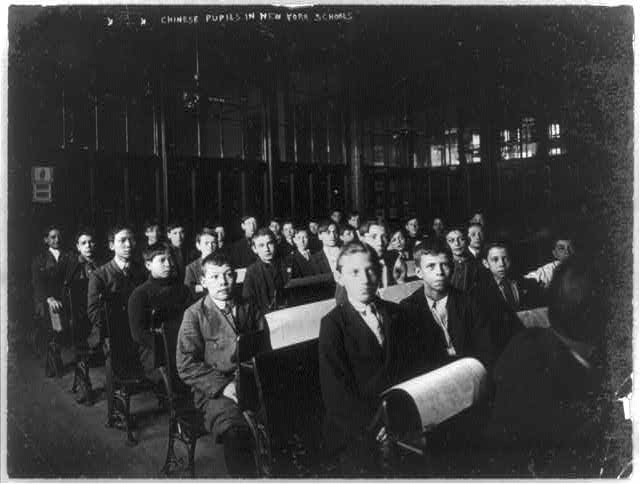
A class of Caucasian and Chinese students inside a public school, circa 1910. Image courtesy the Library of Congress.
Newly arriving students were sent straight to kindergarten until they spoke English well enough to join their peers in their proper grade. Imagine you’re a newly arrived 10-year-old immigrant child, sitting in a kindergarten surrounded by children half your age while the teacher speaks in English, a language you don’t know. Meanwhile, you do know that you could be getting a job and making money to help support your family. What do you do? And if you’re that child’s parent, desperate to feed all your children, what do you tell your child to do? Many parents demanded that the city build more of Snyder’s schools in their neighborhoods, but others would yank their children out of school and put them to work shining shoes or sewing clothes.
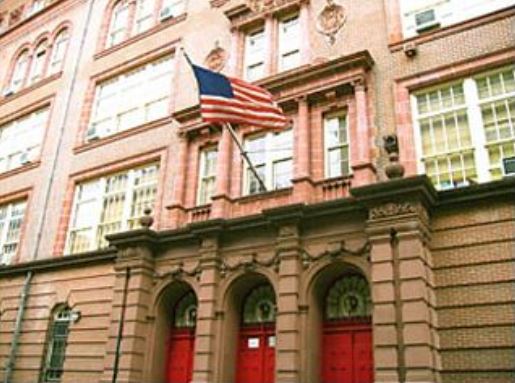
PS 42 on the corner of Hester and Orchard Streets, designed by Snyder. Phot courtesy the NYC Department of Education.
These big, imposing, scientifically designed schools were a huge improvement over the older schools, but it would take more than a few big buildings with lots of light and air to ensure that all the children of the Lower East Side got a school-based education. For many of these children, “school” was a sweatshop or the streets, not a clean, light-filled classroom in a big, modern building.
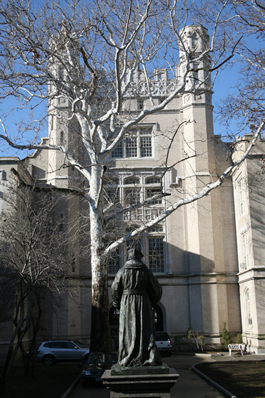
Erasmus Hall Educational Campus, Flatbush Avenue, Brooklyn, designed by Snyder. Photo courtesy the NYC Department of Education.
Today’s public schools are very different from schools of an earlier era. Whereas Snyder wanted to bathe his students in light and fresh air to compensate for the unhealthy tenements, today’s school designers focus more on building “smart” classrooms where students can use the Internet or learn through multimedia presentations. And whereas Snyder designed his buildings to be like factories through which students passed from classroom to classroom, like automobiles on an assembly line, today’s schools are more likely to support much more intimate education, with repeated interaction among students and teachers. Indeed, New York City has divided many of the older, factory-like schools into smaller magnet or bilingual schools, each one catering to a different group of students.
Perhaps the biggest difference between today’s schools and Snyder’s schools is in the attitude of the students. A hundred years ago, many immigrant children saw the schools as an impediment to success. Far better, they reasoned, to devote themselves to work. Although today’s students are by no means immune to apathy and cynicism about school – a particular problem for adolescent students – few would deny that a good academic education, when attainable, is the key to success.
The question we face today is not how to convince immigrant children to complete their education. It’s how to ensure that they get the education they deserve. With a new mayor focused on education, perhaps now is a good time to ask ourselves what we want 21st century schools to look like, and what we want taught there.
– Posted by Adam Steinberg
